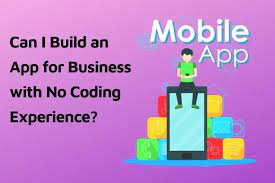How to Develop a Business App With No Coding Experience
Any small company can develop custom software to increase its audience and enhance customer experience using no-code apps.
In the business of commerce, apps are a growing force. Consumer spending on apps alone increased by 19% in 2021 to a staggering $170 billion. On mobile devices, users spend about 87 percent of their time using apps, and unlike webpages, which are frequently free to use, many apps demand payments.
When you take into account the advantages of apps over web browsers, those figures are not shocking. Apps have better visual allure and are easier to use. The navigation is more simple, and the material loads more quickly on various screen sizes. Some applications can also make use of a device’s components, like the camera or accelerometer.
Given that 40% of website visitors will abandon a site if it takes longer than three seconds to open, faster load times are particularly important. Checkout procedures run more smoothly than on a computer thanks to faster load times. Apps are decreasing website revenue for all of these factors and more. According to JMango360, 40.4% of all users increase their purchases from a business after downloading its e-commerce app.
Additionally, apps access a market segment that was untapped previously. Websites reach a broad audience, including the merely curious. Apps are much more useful for users looking for richer, more interactive material. Younger users use applications twice as frequently as users over the age of 45. You cannot afford to overlook that precious market share.
All things considered, it is not always feasible for small businesses to hire someone to create mobile applications. There is an alternative in those circumstances.
Use the progressive web app
Use of a progressive online app is a more recent strategy (PWA). These applications offer a variety of distinct benefits. They are simple to create, share, and obtain, and businesses can use them for a variety of objectives. Additionally, they provide offline use, instant downloads, and automated updates. Additionally, PWAs can be used on all platforms, in contrast to native apps.
PWAs aren’t necessarily the best option for all small businesses; it relies on whether the app will make use of a device’s native functionality. PWAs cannot access a device’s Bluetooth or camera, for instance, whereas native applications can. A native app might be a superior option if you require additional security or extremely quick speed.
It makes sense that executives of small and medium-sized companies would rush to release their own software given the commercial benefits of apps and the emergence of PWAs. Finding a qualified coder, however, can occasionally be challenging. Even if you do locate one, their prices might be out of your price range.
Fortunately, company owners have the option of using a no-code solution to complete the task without going over budget.
3 pointers for beginning with no-code applications
Here are three stages that will prepare you for success before you dive into creating a no-code app:
Make a list of the functions your app must have.
Development without code is no different from any other endeavour in that it must be carefully thought out from the very beginning. Think about the precise features your app will require, such as a drag-and-drop UI for designing, database integration, analytics and reporting features, scheduling capabilities, or e-commerce features. Select a platform that utilises templates to create apps quickly and visually, as this is the most user-friendly method.
In case you ever need a developer to modify the app, check to see if the no-code solution offers a method to extend the app using code. At that point, nobody wants to have to start over from zero, and many no-code solutions can also be low-code.
Select the best no-code app maker.
Always examine a platform’s website to see if prices are transparent. Can the tool grow with your business, you should ask? Is it changed frequently? Which businesses have already effectively used the platform? You can determine the platform’s suitability for your requirements over time by asking yourself questions like these.
Look for platforms that give the features you identified in the previous step when selecting a no-code app builder. This may also help you decide whether you require a native app, for example, if you need to use a device feature that a PWA is unable to offer.
Establish your fusion team
Bring in a broad range of stakeholders to get their feedback on the creation of the app because app development should never take place in isolation. Create a “fusion team,” a collection of groups from across the company, to provide feedback on creating an app for a particular function. For instance, ByteDance, the developer of TikTok and other popular apps, has found success in this manner by encouraging productive teamwork through the use of shared-service platforms (SSPs).
ByteDance can support highly adaptable, specialised teams as they work on particular applications with the help of centralised business, technology, and operations functions thanks to SSPs. This enables the business to send members of these teams where they are required.
Join the no-code future
These days, apps are essential to business strategy, and with no-code options readily available, there’s no excuse not to have one set up and operating for your company. You can build an app with little to no coding, increase market share, and find a platform that works for your company’s requirements by doing some research, using a PWA solution, and assembling a fantastic team.
But act quickly because your rivals have the same choice. Fortunately, beginning the process of developing a smartphone app is simple. Soon enough, you’ll benefit from an app’s increased brand awareness and increased customer loyalty without having to incur the high cost of creating a native app.



